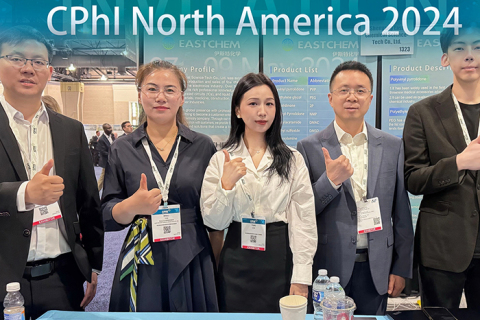
- Home
- >
News
CPhI North America 2024 will be held in Philadelphia, USA from May 07-09. As the world's top professional exhibition for the pharmaceutical industry, CPHI North America is the only pharmaceutical industry event in the United States that covers the entire industry chain including drug research and development, production, and packaging.
On April 29, the three-day 16th Chongqing International Battery Technology Forum/Exhibition (CIBF2024) concluded successfully at the Chongqing International Expo Center. During this period, East Chemical shined at the venue with its hard-core products, providing one-stop solutions for chemical raw material manufacturers.
1. Cement mortar: improve the dispersion of cement sand, greatly improve the plasticity and water retention of mortar, have an effect on preventing cracks and enhance the strength of cement.
HPMC is a non-ionic cellulose ether polymer, which has different chemical properties according to the degree of substitution of the substituent groups and the degree of modification. It is a non-ionic, odorless, odorless white fiber Pure ether powder.
HPMC is hydroxypropyl methylcellulose. It is a kind of non-ionic cellulose mixed ether, which is made from alkalized refined cotton, using propylene oxide and methyl chloride as etherification agents, and is obtained through a series of reactions. The degree of substitution is usually 1.2-2.0. The ratio of methoxyl content and hydroxypropyl content varies.
Gypsum mortar is a building material with gypsum as the main component. Gypsum accounts for 70% to 80% of the total weight of the mortar. Other components include lime, silicate, etc. The following is a summary of the effects of several mortar additives on gypsum mortar.
(1) Whiteness: Although whiteness cannot determine whether HPMC is easy to use, and if whitening agent is added in the production process, its quality will be affected. However, most good products have good whiteness.
Hydroxypropyl methyl cellulose plays three roles in the putty powder: thickening, water retention and construction.
According to different uses and performance requirements, you can refer to the recommended ratio according to the product manual and configure it as needed.
HPMC is divided into two types: instant type and hot melt type. The instant type disperses quickly in cold water and initially has no viscosity because the HPMC is only dispersed in the water without actually being dissolved. After about 2 minutes, the liquid gradually thickens and forms a transparent, viscous colloid. Hot-melt products will appear agglomerated in cold water, but will disperse quickly in hot water until the temperature drops to a certain level and the viscosity will gradually increase to form a transparent and viscous colloid. The hot-melt type is mainly used for putty powder and mortar. It may cause lumps in liquid glue and paint, so it is not suitable. The instant type is more widely used and can be used for putty powder, mortar, liquid glue and coatings without specific restrictions.
Hpmc as a water-retaining agent and retarder for cement mortar, it makes the mortar pumpable. In plastering slurry, gypsum, putty powder or other building materials, it is used as a binder to improve spreadability and prolong operation time.












